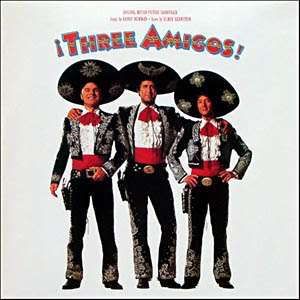By: César Veras
As a college freshman at New York University it was often hard for me to find a place to fit in. Coming from a High School that was predominately Latin@ and Black with less than 5 percent Asian and one white guy, my ideas of diversity were often exemplified through what today I realize was severe segregation (of course at that time I didn't think it was segregation. I thought the whites were purposely separating themselves from the Latin@s and Blacks, which of course, holds some truth to it). To me diversity was having minorities together. A white person was something I only looked upon as authority (teachers, principals, government officials in the t.v.) and as people who rejected people of my kind. In addition, now that I reflect on this time of my life, every human interaction I had in which I felt comfortable enough to consider myself with equal agency as others was with people from the neighborhood. In case you have not seen "In the Heights" Washington Heights is known for its "bodegas" or grocery stores with personnel fluent in Spanish, and English is seeing as something of a rare commodity and something only used by the youth. Also, the people you find in the streets are mostly Dominican. Restaurants have people who speak Spanish and offer Dominican food. Parties are filled with “Coronas” and of course “Presidentes” and the pool hall is as accessible as a "gallera" in the Dominican Republic. Dancing Merengue, Bachata, Salsa and the all time huge phenomenon Reggaeton was the way to party. Coming from this background and getting used to thinking life is supposed to be this way lead me to have the biggest culture shock until this day when I tried to immerse myself into New York University culture. Firstly, I think it's important to state that I am the only person from my family to make it to a 1st tier college. Most of my cousins are attending community colleges and others are not even looking to pursue a degree, they find it more attractive to pack bags in supermarkets and being completely honest with you, in this institution, sometimes I feel like I would be more comfortable in that situation as well. Being out of my comfort zone was, and continues to be extremely difficult, an identity crisis indeed.
This pressure not only made me afraid of my future, but it also bestowed in me the title "future of the family." I don't only have the "obligation" to somehow climb myself out of the lower social standings in this horrible economy in which even the brightest individuals are having difficulty finding jobs, yet I also have on my shoulders the weight of generations coming from the Dominican Republic who were well off during the Trujillo era, who have an ingrained racial spectrum that trained them to believe that because they are "light skinned" – according to Dominican standards – they should be treated better than anyone darker than them, and who are also bitter because of losing most of their wealth to the Dominican turmoil after the assassination of Trujillo in 1961 and deciding to migrate to New York City after everything became bleak during the Latin American crisis of the "Lost Decade" of the 1980s. If Junot Diaz was to describe this story, he’d say it’s a fuku indeed. Who would’ve thought Oscar and I have anything in common haha. I'd like to say these challenges only make me stronger, but that would be an extreme overstatement. Facing the workload at New York University only showed me how behind I have been this whole time, but most importantly how now, during my Juinor year, I am still playing catch up with the people around me. In addition to keeping an internship position at the Langone Medical Center, in the past working nights in order to stop evictions from coming my moms way and dealing with the pressures of one day being "hood and cool" and now being "a lil nerdy" is at the heart of these issues. In fact, code switching for me is not only a daily phenomenon I play with in order to achieve acceptance, but it's also a surviving mechanism, which can bring severe social implications my way if I don't play with accordingly. I write this and I pause and think, my language practices show all this just through the way I sound. I’ll analyze this below.
Latin@'s in top tier university campuses have to struggle with this in a daily basis, especially those who come from not so affluent neighborhoods. Socioeconomic Status is always at conversation with language use and practices. In the essay by Bonnie Urciuoli “Whose Spanish? The tension between linguistic correctness and cultural identity”, Urciuoli delves into Spanish use by Latin@s and the trend of transformation it often goes through as Latin@s try to work their way up the social latter and become conscious of their economic and social standing. She states that “Three particular aspects of this relation stand out: the ways in which ‘knowing Spanish’ operates as part of a pan-Latino identity; the ways in which academic Spanish correctness norms play on students' self-consciousness; and the ways in which Spanish comes to be re-imagined as an element of a globalized version of ethnic identity.” Often times Latin@s don’t think of their Spanish language use in a college setting until they face questions about their identity’s presumed inferiority, and even though these question of inferiority are not directly asked or presumed upon in the “safe environment” of college campuses, they are indirectly internalized and pragmatically analyzed by the subject. Every Spanish class reminds us that our Spanish is not good enough. Every grammar class shows us how our language practices will always be considered inferior according to the infamous “Academia Española”. Indeed, “Linguistic ideologies, as beliefs, rationales or justifications as to what language is or how it is used, reflect or respond to particular social positions and distributions of power (Woolard 1998: 6-7).” These positions are often reinforced and performed on a daily basis because “Ideologies of standardization and correctness particularly represent the maintenance of institutional authority.” These positions come charged with preconceived notions and control the way people run their livelihood. “Language forms (sounds, grammar, words) are only experienced as forms of social action, indexically embedded: all use of language is connected to and interpreted in relation to the social relations and formations making up people’s lives.” Therefore, not only is my use of Spanish viewed as inefficient in an academic setting, but it also induced me to practice my “Castellano” (proper Spanish use) in order to hold some social capital in academic Spanish speaking settings.
Below I have a clip from the Tony Award winning musical “In The Heights” which shows this struggle in a creative way. For many of us living in the heights, the lotto is something of elusive hope, my mom plays it every time there’s a big jackpot in the Mega Lotto and whenever I complain to her about her failed affinity to one day become lucky she says the famously advertised phrase, “oye, nunca se sabe” (“hey, you never know”).
For real, though.
Imagine how it would feel
goin' real slow
down the highway of life
with no regrets
and no breakin' your neck for respect
or a paycheck
Who would have thought that Lyn Miranda was even thinking about language use when writing these powerful words. Maybe this is why my mother feels she has to play the lotto everytime she gets the chance, because if she had the capacity to exercise language in an “intelligible” way, she would not be struggling to put food in our refrigerator. Who would’ve thought language brings respect…







